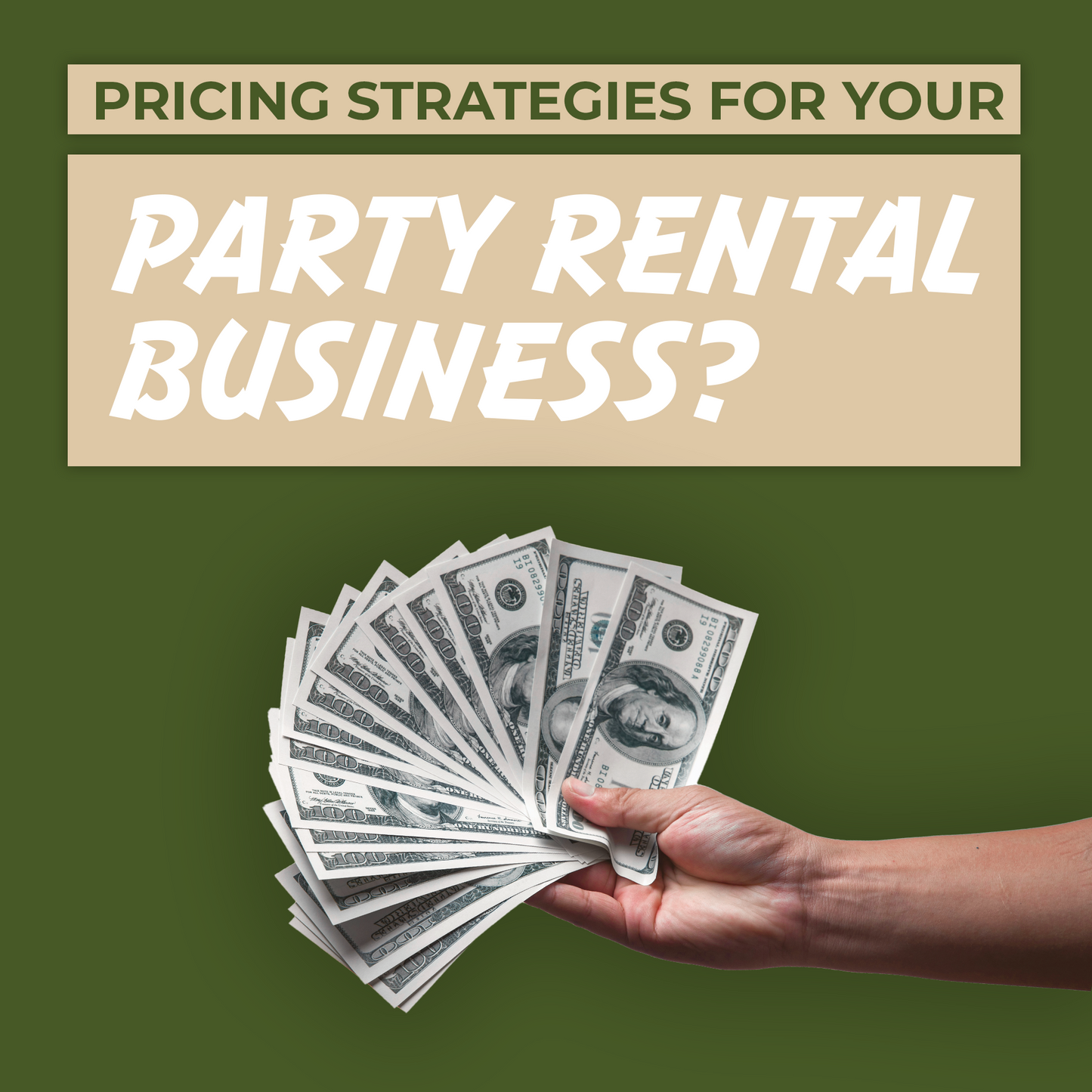
Determining the right pricing strategy for your inventory is key to maximizing profits while still being competitive in the market. It requires a careful balance between covering your costs, meeting customer expectations, and staying ahead of the competition. Here are a few pricing strategies to help you maximize profitability for your party rental business.
Cost-Plus Pricing
Cost-plus pricing involves calculating the total cost of acquiring, maintaining, and delivering your rental inventory, and then adding a markup to determine the final rental price. This straightforward approach ensures that you cover your expenses while generating a profit margin on each rental. Be sure to include all costs, such as purchase or manufacturing costs, maintenance and repair expenses, delivery fees, and overhead costs, when calculating your pricing.
Competitive Pricing
Competitive pricing involves setting your rental prices in line with or slightly below your competitors' prices. Research the pricing strategies of other party rental businesses in your area and adjust your prices accordingly to remain competitive. Keep in mind that while competitive pricing can attract customers, it's essential to ensure that your prices still allow you to maintain profitability.
Value-Based Pricing
Value-based pricing focuses on the perceived value of your rental items to your customers rather instead of your costs or competitors' prices. Consider factors such as the quality of your inventory, the uniqueness of your offerings, and the convenience of your services when determining your prices. Highlight the value-added benefits of renting from your business, such as exceptional customer service, reliability, or exclusive rental options, to justify higher prices.
Tiered Pricing
Tiered pricing involves offering multiple pricing tiers or packages to accommodate different customer needs and budgets. Create tiered pricing structures based on factors such as the duration of the rental, the quantity or quality of items rented, or the level of service provided. This allows you to appeal to a broader range of customers and capture additional revenue from those willing to pay for premium offerings.
Seasonal Pricing
Seasonal pricing involves adjusting your rental prices based on seasonal demand and fluctuations in the market. During peak seasons or high-demand periods, such as holidays, weddings, or summer months, you can increase your prices to capitalize on increased demand. Conversely, offer discounts or promotions during slower periods to incentivize bookings and maintain a steady stream of revenue throughout the year.
Bundle Pricing
Bundle pricing involves offering discounted rates or package deals for renting multiple items together as a bundle. Create themed or comprehensive rental packages that include a combination of items such as tables, chairs, linens, and decor at a discounted rate compared to renting each item individually. Bundle pricing encourages customers to rent more items while maximizing your revenue per booking.
Dynamic Pricing
Dynamic pricing adjusts your rental prices in real-time based on factors such as demand, availability, and market conditions. Utilize pricing automation tools or software to monitor demand trends, competitor prices, and other relevant data and adjust your prices accordingly to maximize revenue. Dynamic pricing allows you to capture the full value of your inventory and optimize profitability in a dynamic market.
Promotional Pricing
Promotional pricing involves offering temporary discounts, promotions, or special offers to attract customers and stimulate bookings. Consider offering promotional pricing for new customers, repeat customers, or specific events or occasions. Use promotional pricing strategically to drive bookings during slow periods, introduce new inventory items, or increase brand awareness.
Rent-to-Own or Lease Options
Explore alternative pricing models such as rent-to-own or lease options for high-value or specialty rental items. Offer customers the flexibility to rent items with the option to purchase them at the end of the rental period or lease items for longer-term use. This allows you to generate additional revenue through recurring rental fees or eventual product sales.
Continuous Monitoring and Adjustments
Regardless of your preferred pricing strategy, you must watch your pricing performance and adjust when necessary. Analyze rental data, customer feedback, and market trends to identify opportunities for optimization and refinement. Stay adaptable in your pricing approach to remain competitive and maximize profits over time.
Selecting the right pricing strategy for your party rental business is essential for maximizing profits and sustaining long-term success. No matter which strategy you go with, prioritize understanding your customers' needs and preferences, while also ensuring that your prices cover your costs and generate a healthy profit margin. Experiment with different pricing approaches, monitor their effectiveness, and be ready to adapt your strategies to optimize profitability and maintain a competitive edge in the party rental market.
